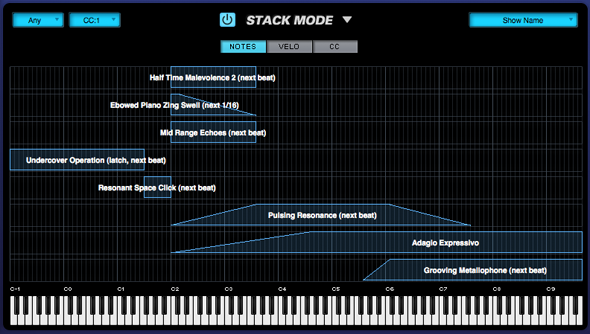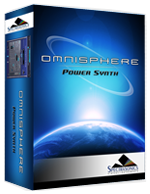STACK MODE - Introduction

STACK MODE is a powerful feature designed for
creating splits, layers, and crossfades with up to eight Parts at once. STACK
MODE offers a flexible environment for either live performance or composing. STACK
MODE is especially useful for recording a multi-Part performance using a single
MIDI track in your host sequencer.
Using Latch and Trigger Modes together with Stack Mode allows you to create complex multi-Part performances that can be layered and quantized in real time.
Use STACK MODE instead of LIVE MODE when you want
to create splits and crossfades, and play all the Parts using a single MIDI
channel.
There are three different ways to interact with
Parts using STACK MODE: NOTES, VELOCITY, and CC. Although they all share the
same STACK MODE Grid layout, they are applied very differently from one
another.
Using NOTES, each Part Region is mapped to a MIDI
Note range, allowing you to map splits, layers and positional crossfades across
your keyboard. Using VELOCITY, each Part Region responds to a specific Velocity
range, so no matter where you are playing on the keyboard, different Part
Regions can be triggered by playing harder or softer. Using CC, Part Regions
can be switched and crossfaded using MIDI Control Change messages.
NOTE: STACK MODE works with
multiple patches simultaneously, so it requires a powerful computer to make the
best use of it. To optimize
performance, mute Patch FX like Reverbs and Delays and use the shared Aux Sends
FX instead.
Enabling Stack Mode

To enable STACK MODE, select the Power Button to
the left of the STACK MODE label.
When STACK MODE is enabled, you’ll see “STACK
MODE” displayed in the left side of the Omnisphere header. This will be visible
from any page in the plug-in.

When STACK MODE is enabled, the Parts on the STACK MODE page are outlined in bright blue.

When STACK MODE is not currently enabled the Parts on the STACK MODE page will be dimmed out.






